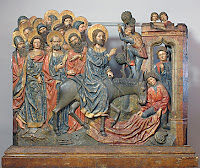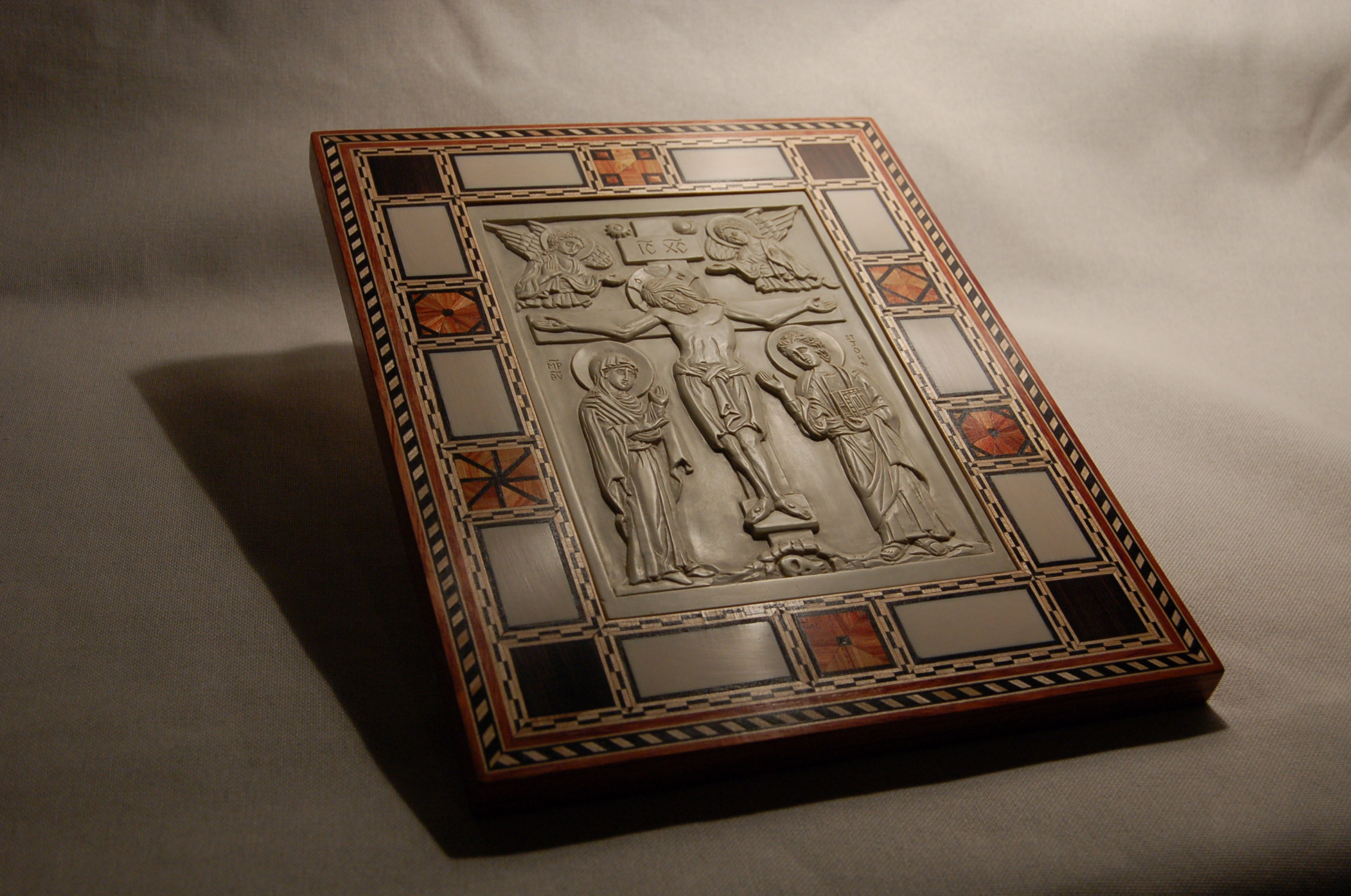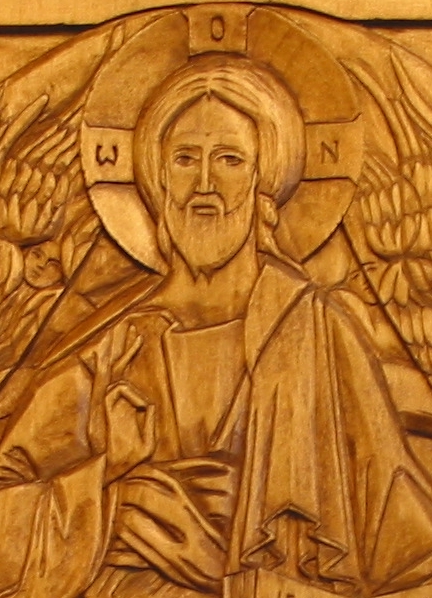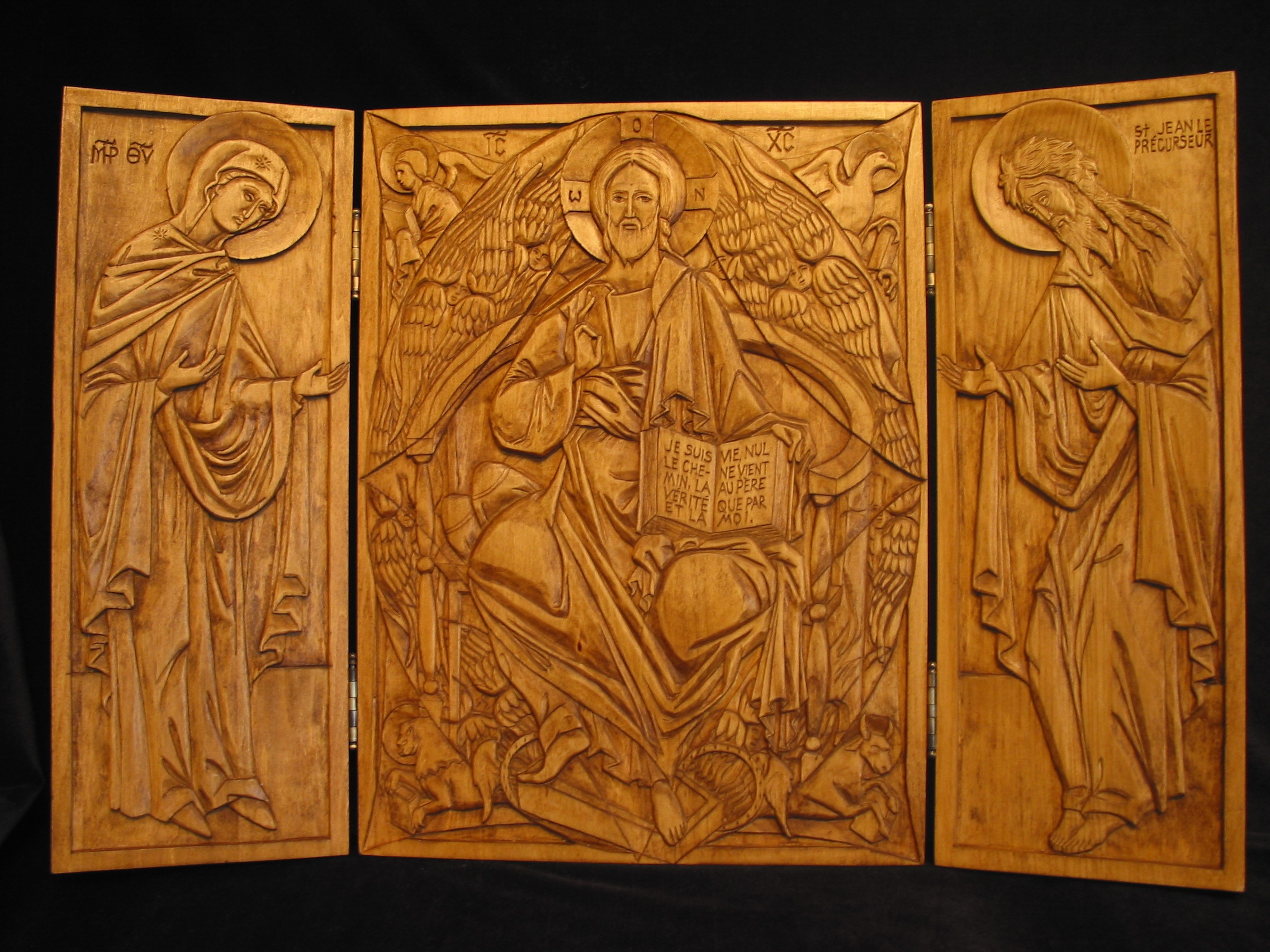 There have been a number of articles published recently, following a show in Moscow, of carved icons of a Russian couple Rashid and Inessa Azbuhanov (their website is here and h/t Deacon Paul Iacono of the Fra Angelico Institute for bring these to my attention). These are exquisite works and are of interest to me particularly because I have to admit I have never seen anything quite like them. I am told that they are re-establishing the tradition of carved icons. These portray form through a combination of color and relief and in this sense are a halfway house between pure relief carving, which uses shadow to describe form; and the painted icon that we are used to.
This presentation of course would be easily used for Western styles and I can see it very quickly adapted gothic style imagery and for the Western variants of the iconographic tradition, such as the Celtic. I would love to see some Catholic artists somewhere taking up the idea.
This does raise the question in my mind (playing devils advocate here, as to why they bother? Is there any need for such a medium? I don't think that we should do something just for the sake of being different; but on the other hand should there be a compelling reason for in order to justify it? Isn't this just gilding the lily, so to speak?
I think that the answer is that provided the image is beautiful and works within the limits that define the tradition, then the greater the variety the better. Each tradition must contain within it the principles that allow the creation of new works, even new variants on the style, so that artists speak afresh to each new generation. Any tradition that relies only on reworking or reproduction of the past will dies. It seems to me that it would be like asking why, given the idea that we have trees in the natural world, did God create so many varieties? For me, it is the fact that so many varieties, beyond counting, can exist and participate in unique ways the same order that makes all things beautiful and direct us to the Creator. If this is so, then it does mean that we should be open to new materials and media as much as a variety of traditional ones, so that would include, for example artificial pigments as much as natural ones (other things being equal). This latter point, incidentally, is not a new one in his book on architecture from the 1st century AD the Roman architect Vitruvius has a section devoted to a comparison of the relative merits of natural and artificial pigments!
So here are some images: St Michael the Archangel, Kazan Mother of God, St John the Forerunner (the Baptist).
There have been a number of articles published recently, following a show in Moscow, of carved icons of a Russian couple Rashid and Inessa Azbuhanov (their website is here and h/t Deacon Paul Iacono of the Fra Angelico Institute for bring these to my attention). These are exquisite works and are of interest to me particularly because I have to admit I have never seen anything quite like them. I am told that they are re-establishing the tradition of carved icons. These portray form through a combination of color and relief and in this sense are a halfway house between pure relief carving, which uses shadow to describe form; and the painted icon that we are used to.
This presentation of course would be easily used for Western styles and I can see it very quickly adapted gothic style imagery and for the Western variants of the iconographic tradition, such as the Celtic. I would love to see some Catholic artists somewhere taking up the idea.
This does raise the question in my mind (playing devils advocate here, as to why they bother? Is there any need for such a medium? I don't think that we should do something just for the sake of being different; but on the other hand should there be a compelling reason for in order to justify it? Isn't this just gilding the lily, so to speak?
I think that the answer is that provided the image is beautiful and works within the limits that define the tradition, then the greater the variety the better. Each tradition must contain within it the principles that allow the creation of new works, even new variants on the style, so that artists speak afresh to each new generation. Any tradition that relies only on reworking or reproduction of the past will dies. It seems to me that it would be like asking why, given the idea that we have trees in the natural world, did God create so many varieties? For me, it is the fact that so many varieties, beyond counting, can exist and participate in unique ways the same order that makes all things beautiful and direct us to the Creator. If this is so, then it does mean that we should be open to new materials and media as much as a variety of traditional ones, so that would include, for example artificial pigments as much as natural ones (other things being equal). This latter point, incidentally, is not a new one in his book on architecture from the 1st century AD the Roman architect Vitruvius has a section devoted to a comparison of the relative merits of natural and artificial pigments!
So here are some images: St Michael the Archangel, Kazan Mother of God, St John the Forerunner (the Baptist).
Icon. Kazan Mother of God

Icon. John the Baptist



















